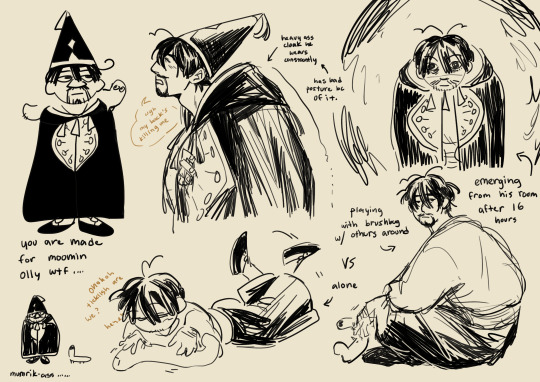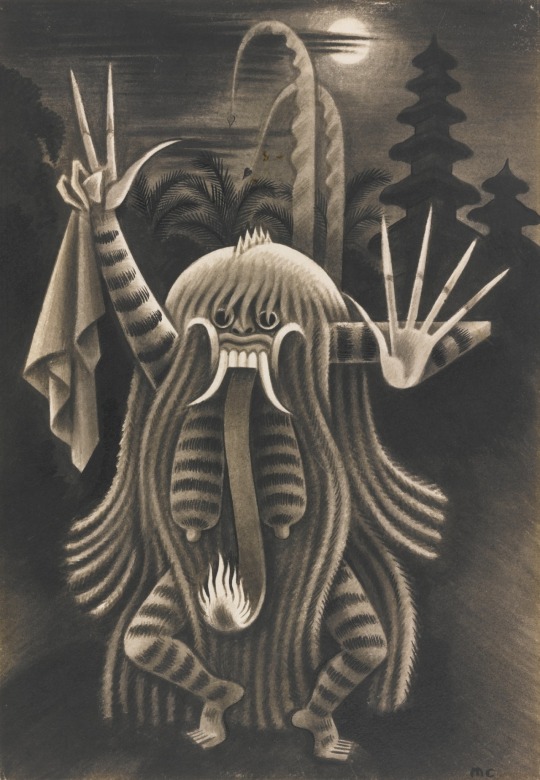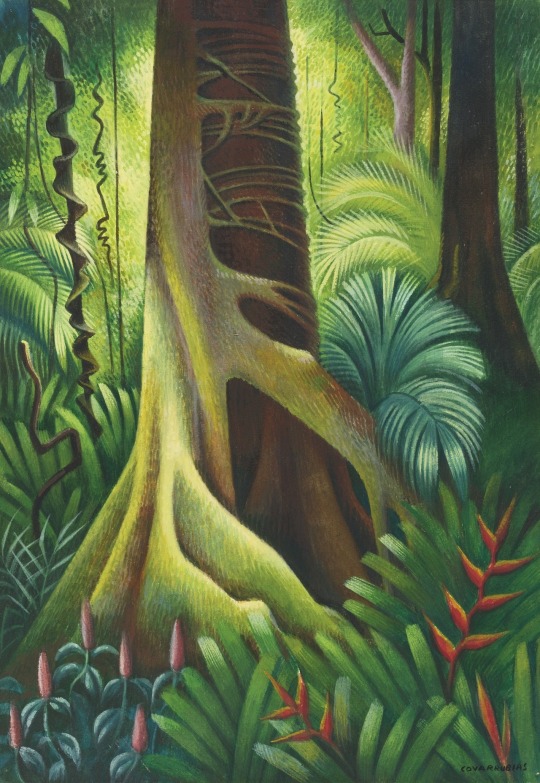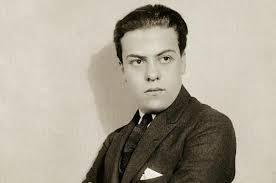#Nicholas Muray
Text

Frida Kahlo, July 6, 1907 – July 13, 1954.
1938 photo by Nickolas Muray.
240 notes
·
View notes
Text






hai here is a sketch dump with too many fandoms :) sorry about the ungodly amount of men here i have been going through it and by it i mean gay
ok wait i ran out of tags??? it wont let me tag them all😭😭😭 im gonna have to be sparing with them uhh i guess i will have to ramble under the cut then cus i like rambling in my tags but i cant with this one 😭
(ok im back from the ramble: it is way too long.... proceed forward if you want to see some guy just absolutely talk nonsense for entirely too long)
no cus i swear i have tried tagging more stuff than this before and never hit the limit but whatever
hello i really use this like a fkn blog huh
i just wanted to provide some thoughts on the harper and rosé one first bc its important to me 😌 cus i was thinking abt harper and how in my head and heart of hearts she would be the kid who thought you get pregnant from kissing and i dont think she ever really grew out of that belief. <- this ended up spawning the idea of harper being a sex-repulsed ace and i will die on this hill actually. fight me or die, you die either way actually nvm
this is just a buncha blorbos i dont know what to tell you really. sketch pages like these always end up so weird for me bc for some reason my brain always wants the characters in them to interact in some way. whether that be talking or just reacting to what the other is doing... its something i cant stop with, its so stupid and silly and i hate it and i love it. where else would i see kabru slowly losing his mind with how loud phoenix wright is in court????
I THOUGHT I HAD GOTTEN OFF THE RAILS WITH THAT BUT THEN THE NEXT PAGE HAPPENED. and all i could do was laugh and ask "what the fuck am i drawing??? HOW DID WE GET HERE? WHY IS THISTLE HERE WITH LEOPIKA HELP" LIKE that page started with the big leopika and then i was like "man i miss thistle lemme draw him real quick" but the curse struck and now hes being homophobic so </3
i rlly like how the nic(k) page turned out ... i just have a lot of nicks i like drawing idk.. the lil guy is an oc,,, one day his ref sheet will be finished and itll be awesome but not for now, sorry baby, no can do. im weirdly happy with how the hands turned out for all of them tho?? so thats a W
yotasuke, murai, nick (youll never know which one im referring to. .. jkjk its hoult i love the pose there ehehhe), nic and the entire last page r my favs. i like em all but those rlly get me yknow- the olly too ofc but ive already posted him, dont mind him being here, hes part of the set. AND OVER ALL IVE BEEN HAVING SO FUN WITH SHADING BLACK AND JUST LEAVING SPOTS BLANK ITS SO ?`????
WHY IS THIS SO LONG PLS DONT READ ALL THIS THIS IS STRAIGHT UP EMBARRASSING AGHSDFGSDHJSGD im all like "yeah i dont like talking about myself or whatever" but as soon as i get to my process or blorbos or smth the floodgates fucking break open, not even burst man.
also dont mind how i havent even acknowledged pingas twink pokemon counterpart. hes just here for shits and giggles i dont know the guy like at all, i watched a handful of eps of horizons and that was it RIP
#blue period#yotasuke takahashi#yakumo murai#tiger and bunny#kotetsu t. kaburagi#yu yu hakusho#hiei#kurama#drawtectives#harperosé#witch hat atelier#arkco#olruggio#brushbug#trigun#nicholas d. wolfwood#all saints street#nick hoult#bna pinga#dungeon meshi#kabru#ace attorney#phoenix wright#thistle#hunter x hunter#leorio paladiknight#kurapika kurta#leopika#my art#doodle
1K notes
·
View notes
Text



José Miguel Covarrubias (1904 - 1957), also called "El Chamaco" ( Spanish for "The Boy" ), was a Mexican painter, caricaturist , ethnologist and art historian.
In 1932 she accompanied Nicholas Muray on his study trip through Southeast Asia, Africa and Europe, which had enabled him to receive a Guggenheim scholarship . That same year, the two went to Mexico City, where Covarrubias attended the National School of Anthropology and History at the Universidad Nacional Autónoma de México(UNAM) taught the subject of ethnology. He represented, among other things, diffusionist positions and pointed out the similarities between ancient Central American art and Asian forms.
https://de.wikipedia.org/.../Miguel_Covarrubias_%28K%C3...
9 notes
·
View notes
Text
Art History Reader: The History of Color Photography

Mickalene Thomas, Sista Sista Lady Blue, 2007, San Francisco Museum of Modern Art.
Mama don’t take my Kodachrome away.
Did you know you can create a color photograph using Jell-O? What about potato starch? Okay, making a color photograph using kitchen staples isn’t as easy as making a Jell-O salad in a mold, but it is possible! While we see the world in color, the photographic technological advances took a long while to catch up. From hand-coloring and layering to using mercury, gelatin, or starches, scientists worked to invent the perfect process to emulate the color in our world. While we may have it easy today, being able to take a color photograph with the camera on our phone, the history to get to this point is just over one hundred years old.
The majority of the photographic processes developed in the nineteenth century were monochromatic, meaning they only used one color. The cyanotype, invented by Sir John Herschel, was one of the first photographic processes and it created a monochromatic blue version of each image. These monochrome processes were able to show the values, or the variations of light and dark, of the world around us, but they could not replicate the color we see. Color is a reflection of light bouncing off the objects we see. All of the colors technically exist in white light, the light we traditionally use to see the world, but of course we see certain objects as specific colors. Take, for example, a red apple. All of the colors in the white light are absorbed into the apple except for the “red” light, which is reflected and is what we see. (For more information on how this works, check out the Introduction to Color Theory reader!). Scientists wanted to find a way that cameras could see and capture the light and colors within it, not just the values. Thus began the color photography adventure.
Most of the monochrome processes could be colorized, meaning they could be tinted or hand painted to add color to the image. While the result is a colored photograph, the photograph itself does not capture the accurate colors that exist in the light. In the early 1900s, many photographers would create color photographs using layers of carbon tissue comprised of pigmented gelatin on a paper base. In a complex and fragile process, these layers would be exposed to light and those areas of gelatin not hardened would be washed away. Artists like Nicholas Muray often used this process to get vibrant and surreal colors, as seen in the portrait of his lover and artist in her own right, Frida Kahlo, in Frida in New York. He used this process well into the twentieth century as nothing could get the bright colors quite like carbon printing. While this process layered color using light, it was not successful at truly capturing color. However, the Lippmann process, invented by physicist Gabriel Lippmann, was successful in capturing the different wavelengths of light and the colors that were reflected. While it did not require any dyes or artificial color, it was unfortunately very complex, and the resulting image could only be viewed in limited light and could not be replicated, making it unsuccessful commercially. But Lippmann received the Nobel Prize for Physics for this invention in 1908, so no hard feelings?
The first semi-successful color photography process was the three-color process, where three monochromatic images were taken using colored light filters in red, green, and blue. The separations of color, when shown layered together as transparencies, created a simulation of colors and values. This method, known as an additive color method, was used as a basis for the first commercially successful color processes. Additive color methods work by mixing colored lights or slides together to recreate colors. In 1903, the Lumière brothers used these processes as the basis for the Autochrome Lumière. These were glass plates with one side coated with dyed potato starches that would essentially work as color filters, carbon black, and gelatin-silver emulsion. When the plate was exposed to light in a camera, the light would enter through the “color filters” first, then the emulsion, which would result in a full-color positive image. The colors are not as vibrant as what we have come to expect from color photography. They often have a soft, almost hand-colored quality to them, as seen in Edward Steichen’s Clara Steichen with Bowl of Oranges. This was the primary method for creating color photographs until the legendary Eastman Kodak Company came onto the scene.
In 1936, Kodak developed the lauded Kodachrome, a color reversal slide film. Known for their slogan, “You press the button, we do the rest!”, the film had three layers of color emulsions on one base that could be loaded into the camera and exposed just as traditional black and white film. When the roll was fully exposed, it would be sent back to Kodak for development. The development was complex, where each individual emulsion layer had to be developed as a white-silver image, then the silver had to be removed, and the remaining developed yellow, magenta, and cyan layers would show a full color image. This was a subtractive process, where colors are subtracted from white light by dyes. Essentially, three colors would absorb their complementary color of light and then be dyed and superimposed to create a positive. Their Kodachrome film captured vibrant colors that were brighter than life. Artist Stephen Shore is known for his series of roadtrip photographs that capture the vivid landscapes of the west. You can see the amazing blue hues in the Oregon landscape in U.S. 97, South of Klamath Falls, Oregon. The produced images were positives, rather than the traditional negatives, and sent back to the photographers as individual transparent slides. At the same time, the German company Agfa created an even less complex process for development, where the colors could all be developed at once, but Kodak had the monopoly on the market. Kodachrome held the color film market for years, but its complex development was too expensive to continue into the twenty-first century. It was officially discontinued in 2010, an event many photographers still mourn today. These systems helped develop many future color film processes.
During the 1960s and 70s, there were many options for color film. Aside from Kodachrome, other color film types were produced as color negatives, which were easier for individuals to develop at home into as many prints as one's heart desires. Many people still didn’t want to develop their own photographs and luckily for them a new product was on the market - in 1963, the instant color Polaroid was available. Polaroid images were the closest thing to the instant gratification we receive today for many years. These images were able to immediately capture the reflected colored light, producing a positive image. The unique shape and size of the Polaroid photograph is due to the chemistry that exists within it; when the photograph is exposed and pushed through the camera, the areas that hold the chemistry are popped and the chemistry is released, developing the photograph. The color development itself is very similar to the Kodachrome development - but without the wait! These instant film types have had a resurgence in recent years, known for their vintage and nostalgic vibes.
It’s important to acknowledge the relation of light and color in photography to the inherent racial bias in twentieth century Western society. It’s not new to hear that the established norm was set up for white people; unfortunately, color photography and film is no different. When color film was developed in studios, a Shirley card was often used to check the calibration of the colors. The Shirley card was the standard for color, but it was very constrictive with what it showed; it was an image of a white woman with brown hair and primary colors around her. Technicians would print the Shirley card and if any colors looked “off” (too yellow, too dark, too light, etc.), they would adjust their process. For many, the Shirley card did not represent them. In using this standard, anyone with darker skin often had their photographs and portraits look underdeveloped or without the same contrast that would be seen in life. There are nuances to the colors that were not visible, and many family photo albums were affected for years. This lack of representation is important to recognize and rectify. It wasn’t until the 1970s, twenty years later, that the Shirley card would feature women who were Black, Asian, and other skin tones. Artists continue to address these issues of racial bias in photography. Mickalene Thomas only uses film when she shoots her photographs of Black women through a queer-feminist lens. Her work discusses the idea of Blackness and feminism, often using poses that reference Odalisque paintings and the traditional hetero normative framework. She greatly considers the colors within her images, using aesthetics reminiscent of the 1970s. Many of these issues with color in film would be addressed with the development of digital photography.
Many of us take digital photography for granted. We can easily take the phone out of our pocket and capture anything in its precise colors, and then use an app to edit it and make the pinks and blues really pop! Though it wouldn't be refined for another twenty years, the first digital camera was developed in 1975. In that year, Bryce Bayer invented the Bayer Color Filter Array, which allowed one image sensor to capture color, a revelation that is still used today. These sensors are very sensitive to certain colors of light which move through a filter first. The sensor includes a series of pixels that records specific wavelengths of light and color. These were developed in cameras and have only become more advanced, and smaller - most in phones today are around one centimeter! Artists continue to experiment with the lengths they can push to alter colors digitally. Artist and visual activist Zanele Muholi uses digitally enhanced portraits to create work about reclaiming their Blackness and gender. They use everyday objects like closepins, toiletpaper rolls, and latex gloves, but transform their appearances with multiples and new uses, in reference to high fashion. Muholi will often digitally darken the appearance of their skin, making the color and contrast even more intense, as evident in Ngwane I, Oslo. This manipulation can make artists’ messages more intense.
While we all have access to advanced digital cameras today, many artists choose more traditional approaches to color photography. This history of color photography within art is rather rocky. Just as any black sheep of the family, photography has long been the black sheep of the art world, and color photography even more so. When it was developed, color photography wasn’t taken seriously even by established art photographers. It was rather seen as a gimmick, as the artists usually sent the film in to be developed rather than doing it themselves. William Eggleston is often referred to as the father of color photography. Unfortunately for Eggleston, his photography idol at the time, Henri Cartier-Bresson, did not agree with the potential of color photography; the first time he met him, he stated, “William, color is bullshit.” While Cartier-Bresson may not have appreciated Eggleston’s eye, Eggleston influenced and may have created the American color photography movement. One of his most famous prints, and most risque, is Greenwood, Mississippi, which depicts a red room with a single bare lightbulb in the middle and a poster of sex positions in the corner. The color of the red is completely overwhelming, and when looked at as a true color print, rather than a digital representation, the dye looks like a wet, freshly painted wall. Red is often a difficult color to work with for photographers, as it rarely looks as vibrant as it does in life.
Eggleston’s use of color film influenced other artists to experiment with its vibrancy, too. Nan Goldin’s Nan One Month After Being Battered shows the reality of domestic violence in stunning color, while Cindy Sherman’s Untitled emphasizes the outrageous fashion of the 1980s. Some artists don’t like the vibrancy of certain films and look for a softer touch. Justine Kurland is one such artist, who appreciates the process of creating full, complex compositions. Her work Bathers was created using an 8x10 camera with color film, where each scene is carefully created between her and the models to inspire a photograph reminiscent of a Romantic painting. Kurland works to plan each composition carefully without taking more photographs than necessary. Her use of film gives rise to soft, feminine images. Many artists continue to experiment with what color film can do in its color representation and process as compared to digital.
Today, the ability to change almost any color in our digital photographs is as easy as opening an app on our phone. We no longer have to wait weeks to see how our photographs developed, or use kitchen goods to mimic colors. While some artists continue to use the methods of Jell-O, dyed potato starches, and Polaroids, each of these color advancements over the past hundred years has made it possible to capture the world in our pocket more vibrantly. While we may have the world of alterations in the abundance of apps, many of us still wish Kodak didn’t take our Kodachrome away. *cue Paul Simon*
Works of Art Referenced:
Frida in New York by Nickolas Muray
Clara Steichen with Bowl of Oranges, 1907 by Edward Steichen
U.S. 97, South of Klamath Falls, Oregon, July 21, 1973 by Stephen Shore
Sista Sista Lady Blue by Mickalene Thomas
Ngwane I, Oslo by Zanele Muholi
Greenwood, Mississippi by William Eggleston
Nan One Month After Being Battered by Nan Goldin
Untitled by Cindy Sherman
Bathers by Justine Kurland
For more information on color photography, the additive and subtractive processes, and the George Eastman House history, check out the videos below:
Color Photography - Photographic Processes Series, Updated - Chapter 11 of 12
Color Models Explained (Additive & Subtractive) | Digital Color
Before Photography - Photographic Processes Series - Chapter 1 of 12
By: Epiphany Knedler
2 notes
·
View notes
Photo

❗️❗️❗️❗️❗️❗️❗️ That moment when you’re packing up all your books getting ready for a move and you uncover your favorite Frida/art book. • • • This one was bought at @molaaart and is titled “ I will never forget you”. (Author: Solomon Grimberg) It details unpublished photographs and letters between Frida Kahlo and Nicholas Muray—Friends, lovers and artists— giving backstory and much contacts for some of the most iconic pictures we have of her shot by Muray. #fridakahlo #bnplit #nickloasmuray #latinxartist #photographybook
13 notes
·
View notes
Photo

En esta foto de 1938 proporcionada por Sotheby's, el pintor Diego Rivera posa con una máscara de gas en Casa Azul, México. La imagen es parte de una colección de fotografías de Nicholas Muray
0 notes
Text
Previously unseen Frida Kahlo photos taken by her lover to be auctioned
Previously unseen Frida Kahlo photos taken by her lover to be auctioned Previously unseen Frida Kahlo photos taken by her lover to be auctioned https://ift.tt/2UvqOMQ
NEW YORK — Frida Kahlo with her head wrapped in bandages. Diego Rivera posing with a gas mask. Miguel Covarrubias at the beach.
The photographs of the three Mexican painters and other works by Nickolas Muray, many of them never seen before, are going on sale this week in New York.
The images, dating from around 1925 to 1946, are among 78 portraits by the renowned Hungarian-born American photographer, who had a decade-long affair with Kahlo after meeting her in 1931. They will be auctioned Friday as part of Sotheby’s “Photographs” sale, each with a starting price of US$15,000.
“It is the first time that such a large group of photographs by this artist, by Nickolas Muray, go on sale,” Sotheby’s specialist Aimee Pflieger told The Associated Press in a recent interview.
The anonymous consigner originally bought them from the photographer’s estate, according to the auction house.
In this undated photo provided by Sotheby’s, artist Miguel Corrubias poses for portrait on a beach. The image is part of a collection of photographs by Nicholas Muray up for auction on Friday, April 5, 2019.
Muray met Kahlo and Rivera through Covarrubias, whom he befriended while working for Vanity Fair, where Covarrubias served as a cartoonist. They later introduced him to other prominent figures of the arts.
There are at least 20 photographs of Kahlo, Rivera or both of them together.
In this 1940 photo provided by Sotheby’s, artists Frida Kahlo and Diego Rivera pose for a portrait.
Pflieger noted that the collection “doesn’t necessarily show the progression of the relationship between Frida and Nickolas, but it does show this incredibly wide range of people that were involved in their circle.”
Portraits of composer Carlos Chavez, muralist Roberto Montenegro and actress Margo Albert are some examples.
Many photos of Kahlo shot by Muray have become iconic, like one from 1939 in which the painter appears with her hair braided through with purple yarn and wrapped around her head in a sort of crown while a deep magenta shawl drapes her shoulders. Some are currently on display at the Brooklyn Museum, as part of Frida Kahlo: Appearances Can Be Deceiving.
But Pflieger said the ones in the sale are much more intimate.
The collection can be seen at the auction house in New York or online, at sothebys.com.
In this 1938 photo provided by Sotheby’s, painter Diego Rivera poses with a gas mask in Casa Azul, Mexico. The image is part of a collection of photographs by Nicholas Muray up for auction on Friday, April 5, 2019.
//<![CDATA[ ( function() { pnLoadVideo( "videos", "zdWdwnXjjZM", "pn_video_697456", "", "", {"controls":1,"autoplay":0,"is_mobile":""} ); } )(); //]]>
Click for update news Bangla news
https://ift.tt/2HX5n1k
world news
#metronews24 bangla#Latest Online Breaking Bangla News#Breaking Bangla News#prothom alo#bangla news#b
0 notes
Text
Some images of Pierrot
A small and random selection of paintings and photographs from the 18th century up to the 20th.
Pierrot Gilles. Painting by Watteau,ca 1718/19
Paul Legrand. Photo by Nadar c1855
Lionel Atwill. Photo by Nicholas Muray
Sarah Bernhard. Photo by Nadar
A lovely hat. (photographer unknown)
David Bowie dressed as a Pierrot in 1983 (photographer unknown)
(see credits by clicking the images)
Have a nice day!
xoxo Mimi Berlin Blogger Team
Oh, and here’s a link to more on the Pierrot on this blog
Some images of PierrotJust a random selection of Pierrot images as seen by painters and photographers through the ages. Enjoy! xoxo #MimiBerlin Blogger Team Some images of Pierrot A small and random selection of paintings and photographs from the 18th century up to the 20th.
#18th-century#20th century#circus#clowns#david bowie#images#lionel atwill#nadar#paul legrand#photo&039;s#pierrot#sarah bernhard#watteau
0 notes
Text
Live-action Tokyo Ghoul tiếp tục ra mắt 2 trailer nữa
New Post has been published on https://love2d.net/2017/06/26/live-action-tokyo-ghoul-tiep-tuc-ra-mat-2-trailer-nua/
Live-action Tokyo Ghoul tiếp tục ra mắt 2 trailer nữa
Biết ngay kiểu gì cứ gần chiếu là các ông lại ra trailer trêu ngươi khán giả. Và hôm nay, nhà phân phối Shochiku đã tiếp tục đăng tải 2 trailer dài 60s và 30s về Live-action Tokyo Ghoul. Cả 2 video đều cho chúng ta thấy ca khúc chủ đề “Banka” được thể hiện bởi RADWIMPS và nghệ sĩ Ghita Yōjirō Noda, dưới cái tên illion.
youtube
youtube
Các nhân viên cũng tiết lộ những cảnh quay mới vào thứ Hai, với Nobuyuki Suzuki trong vai Kōtarō Amon.
Tài khoản twitter của bộ phim cũng đã đăng tải những bức ảnh khóa huấn luyện để vào vai diễn của Suzuki.
◤◢◤◢ 圧倒的肉体美! ◤◢◤◢
映画『#東京喰種 トーキョーグール』で、鈴木伸之さん演じるCCGの捜査官・亜門鋼太朗の肉体美全開な劇中トレーニング写真を公開!これまで経験したことが無いほどの“過酷”な稽古とトレーニングで鍛え上げられた、美しい肉体と気迫に満ちた姿は必見です!! pic.twitter.com/DRo5DYABH7
— 映画『東京喰種 トーキョーグール』 (@tkg_movie) June 26, 2017
Bộ phim sẽ ra mắt vào ngày 3 tháng 7 tại Anime Expo ở Los Angeles, ngày 7 tháng 7 ở Berlin, và 10 tháng 7 tại nhà hát Marunouchi Piccadilly ở Chiyoda, Nhật Bản trước khi phát hành rộng rãi tại Nhật Bản vào ngày 29 tháng 7. Funimation đã cấp phép cho bộ phim và dự định phát hành nó ở Bắc Mỹ với phụ đề tiếng Anh. Bộ phim sẽ được công chiếu tại Đài Loan, Hồng Kông, Ma Cao, Singapore, Malaysia, Brunei, Indonesia, Việt Nam, Thái Lan, Philippines, Đức, Autstria, Thụy Sĩ, Úc, New Zealand, Hoa Kỳ, Canada, Hàn Quốc, Tây Ban Nha, Ý, Vương quốc Anh và Ireland.
Dàn diễn viên bao gồm:
Masataka Kubota (live-action Death Note, Mars, Photo Braver 7 TV series) trong vai Ken Kaneki
Fumika Shimizu trong vai Tōka Kirishima
Yuu Aoi (Megumi trong live-action Rurouni Kenshin) trong vai Rize Kamishiro
EXILE‘s Nobuyuki Suzuki trong vai Kōtarō Amon
Yo Oizumi (Layton trong the Professor Layton series) trong vai Kureo Mado
Kunio Murai (live-action Nobunaga Concerto) trong vai Kuzen Yoshimura
Kenta Hamano (live-action Moteki) trong vai Enji Koma
Nozomi Sasaki (One Piece Film Z) trong vai Kaya Irimi
Shuntarō Yanagi (live-action Crows Explode) trong vai Renji Yomo
Hiyori Sakurada (live-action Nigakute Amai) trong vai Hinami Fueguchi
Shōko Aida (The Case of Hana & Alice) trong vai Ryōko Fueguchi
Kai Ogasawara trong vai Hideyoshi “Hide” Nagachika
Kabuki actor Minosuke Bandō trong vai Uta
Shunya Shiraishi trong vai Nishio Nishiki
Seika Furuhata trong vai Yoriko Kosaka
Tomoya Maeno trong vai Ippei Kusaba
Dankan trong vai Hisashi Ogura
Ryō Iwamatsu trong vai Akihiro Kanō
Kentarō Hagiwara (“Super Star”) đạo diễn bộ phim. Masanori Morikawa, một nhà thiết kế Christian Dada và là một fan hâm mộ của manga gốc, đã thiết kế mặt nạ và trang phục của những ghoul trong bộ phim. Don Davis (Matrix) đang soạn nhạc cho bộ phim, và Nicholas Becker (Arrival, Zero Gravity, Batman Begins) phụ trách các hiệu ��ng âm thanh đặc biệt.
0 notes
Photo

LEGION
Trailer
Descargar Serie
Ver Online
Sinopsis: David Haller fue diagnosticado de esquizofrenia cuando era un niño y se encuentra actualmente en una institución mental. Su rutina en un hospital psiquiátrico cambia con la llegada de una nueva paciente llamada Syd, que desencadena el descubrimiento de que las voces y visiones que tiene pueden ser reales.
Creador: Noah Hawley
Dirección: Michael Uppendahl, Dennie Gordon, Noah Hawley, Larysa Kondracki, Tim Mielants, Hiro Murai
Guión: Chris Claremont, Noah Hawley, Bill Sienkiewicz
Reparto: Dan Stevens, Rachel Keller, Aubrey Plaza
Productor: Regis Kimble, Brian Leslie Parker, Bryan Singer, Stan Lee
Cia.: 26 Keys Productions / FX Productions / Marvel Television
Música: Jeff Russo
Fotografía: Dana Gonzales
Edición: Regis Kimble,
Casting: Courtney Bright
Diseño de producción: Michael Wylie
Dirección de arte: Michael Corrado
Diseño de vestuario: Carol Case
Sonido: Kurt Nicholas Forshager
Full Cast & Crew
Género: Drama - Ciencia Ficción
Duración: 60 min.
País: EEUU
Año: 2017
0 notes
Photo

in the mood for fall.
98 notes
·
View notes
Photo

Marilyn photographed by Nickolas Muray, 1952.
46 notes
·
View notes

